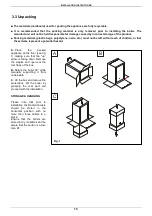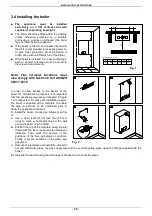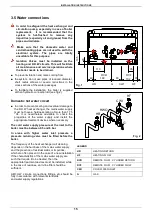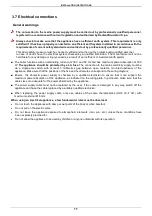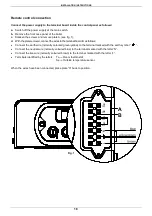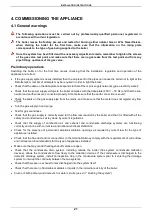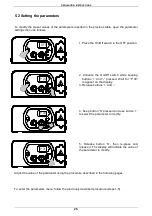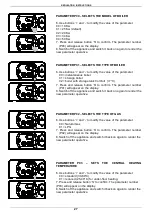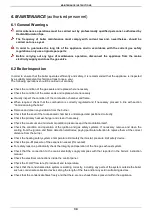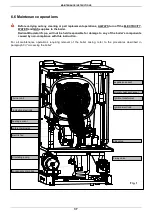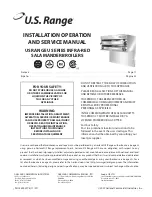
INSTALLATION INSTRUCTIONS
23
T
S
4.3 Flushing the system
Failure to flush and add inhibitor to the system will invalidate the appliance working.
All systems must be thoroughly drained and flushed out using additives – corrosion inhibitors and flushing
agents/descalers .
To flush out the primary side of this unit.
a.
Fill the boiler as per the filling instructions.
b.
Using a drain off cock on the lowest point of the system allow the water to drain from the system and boiler.
c.
In order to flush the system correctly turn off all radiators open the filling loop and drain cock simultaneously and
allow the water to flow through the boiler.
d.
Open each individual radiator allowing water to flow through then turn that radiator off and repeat for all radiators
on the system.
e.
Turn off the filling loop and close the drain cock open all radiators and open the filling to fill the system.
f.
Continue to fill the system until the pressure gauge reaches 1 bar.
To flush out domestic hot water circuit.
a.
Ensure that the DHW expansion vessel has been fitted in line with the instructions on page 14 of the manual.
b.
Open all hot water outlets.
c.
Turn on inlet group supply so water enters the boiler; leave to fill until water is released from the hot water
outlets. Turn off all hot water outlets.
d.
Connect a hosepipe to the cylinder drain cock and open the drain cock.
e.
Allow water to flow through the boiler and out of the drain cock.
f.
Turn off water supply, disconnect the hosepipe, close the drain cock and refill the boiler.
4.4 Filling the condensate trap
The condensation trap must be pre-filled when
starting the boiler for the first time in order to
prevent flue gases from flowing back through
the trap.
The filling operation is carried out as follows
(see fig. 1):
•
Remove plug
T
and fill the trap
S
three
quarters full with water;
•
Replace plug
T
and connect the drainpipe
P
into a condensate discharge trap
conforming to current legislation;
Attention!
It is recommended to clean the
condensate trap, after a few months of boiler
operation, to remove deposits/residuals left
after the first condensate passage within the
boiler new components that may interfere with
the correct operation of the trap itself.
Fig. 1





